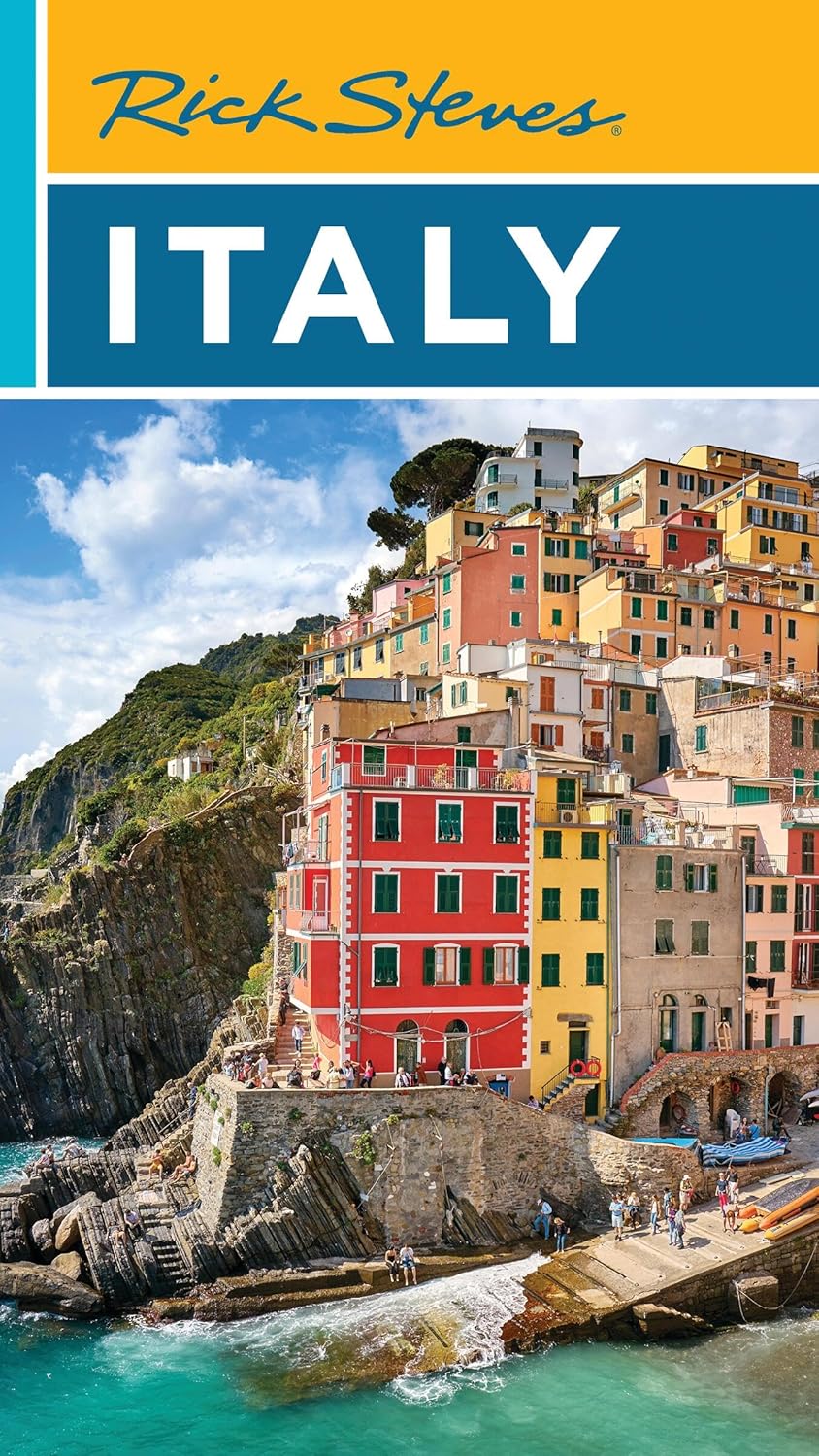The Location Of Pompeii In Italy
The location of Pompeii in Italy.
Have you ever wondered what it would be like to step back in time and walk through the streets of an ancient Roman city?
Pompeii in Italy offers exactly this extraordinary experience, making it one of the world's most captivating archaeological sites. This remarkably preserved ancient city, frozen in time by volcanic ash nearly 2,000 years ago, provides visitors with an unparalleled glimpse into daily life during the height of the Roman Empire.
Where is Pompeii in Italy? This ancient marvel sits in the Campania region of southern Italy, nestled in the shadow of Mount Vesuvius, the very volcano that both destroyed and preserved it.
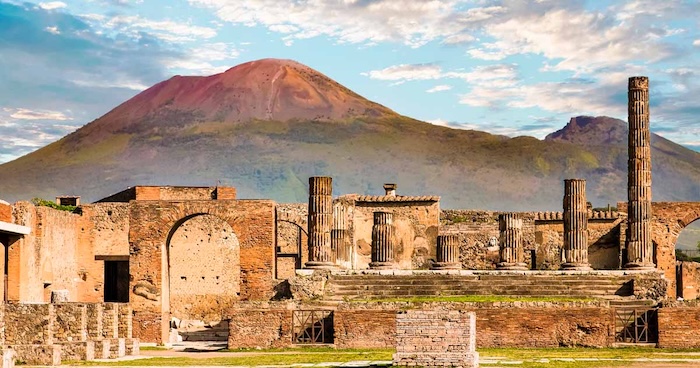 Pompeii in the shadow of Vesuvius
Pompeii in the shadow of VesuviusLocated approximately 23 kilometers southeast of Naples, Pompeii
occupies a strategic position on the Bay of Naples, which made it a
thriving commercial hub in ancient times. The modern town of Pompei
(with one 'i') surrounds the archaeological site, creating a fascinating
blend of ancient history and contemporary Italian life.
The Location Of Pompeii In Italy
The geographical setting of Pompeii couldn't be more dramatic or significant. Situated on a prehistoric lava plateau formed by earlier eruptions of Vesuvius, the city enjoyed fertile volcanic soil that supported abundant agriculture. This prime location, combined with its proximity to the sea and major Roman trade routes, made Pompeii a prosperous city of approximately 15,000 residents before the catastrophic eruption of 79 AD.
Getting to Pompeii is reasonably straightforward, with multiple transportation options available to suit different travel preferences and budgets.
The most popular and convenient method is taking the Circumvesuviana train from Naples, which runs regularly throughout the day and takes about 40 minutes to reach the Pompei Scavi-Villa dei Misteri station. This local train line connects Naples, Pompeii, and Sorrento, making it an excellent choice for visitors exploring the broader region.
If you're driving to Pompeii, the site is easily accessible via the A3 Autostrada (highway) from Naples or Salerno. Take the Pompei exit and follow the signs to "Scavi" (excavations). However, parking can be challenging during peak tourist season, so arriving early in the morning is highly recommended. Several paid parking areas are available near the main entrances, with prices typically ranging from €5-10 per day.
For those staying in Rome, high-speed trains to Naples make Pompeii accessible as a day trip, though it requires some planning. The journey from Rome to Naples takes about 1 hour and 15 minutes on the Frecciarossa or Italo trains, followed by the Circumvesuviana connection to Pompeii. Many visitors find this option worthwhile, especially when combined with exploring Naples or the Amalfi Coast.
The archaeological site of Pompeii covers an impressive 66 hectares (163 acres), making it one of the largest and most comprehensive ancient sites in the world. Three main entrances provide access to different areas of the ruins:
- Porta Marina (the main entrance),
- Piazza Esedra, and
- Piazza Anfiteatro.
Each entrance offers unique advantages, with Porta Marina being the most popular due to its proximity to the forum and many major attractions.
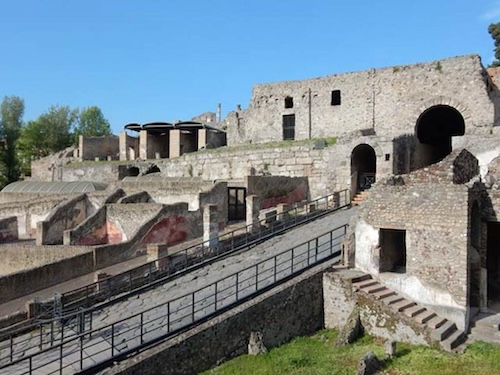 Porta Marina Pompeii
Porta Marina PompeiiThe Location Of Pompeii In Italy
Things to do in Pompeii extend far beyond simply walking through ancient ruins. The site offers an incredible journey through remarkably preserved streets, houses, shops, bathhouses, theaters, and temples.
You'll discover intricate mosaics, vivid frescoes, and even ancient graffiti that provide intimate glimpses into the daily lives, thoughts, and humor of Pompeii's residents from nearly two millennia ago.
One of the most moving experiences in Pompeii is encountering the plaster casts of victims preserved in their final moments. These haunting figures, created by pouring plaster into voids left by decomposed bodies in the hardened ash, offer a profound and emotional connection to the human tragedy that unfolded here. The Garden of the Fugitives displays several of these casts in a particularly poignant setting.
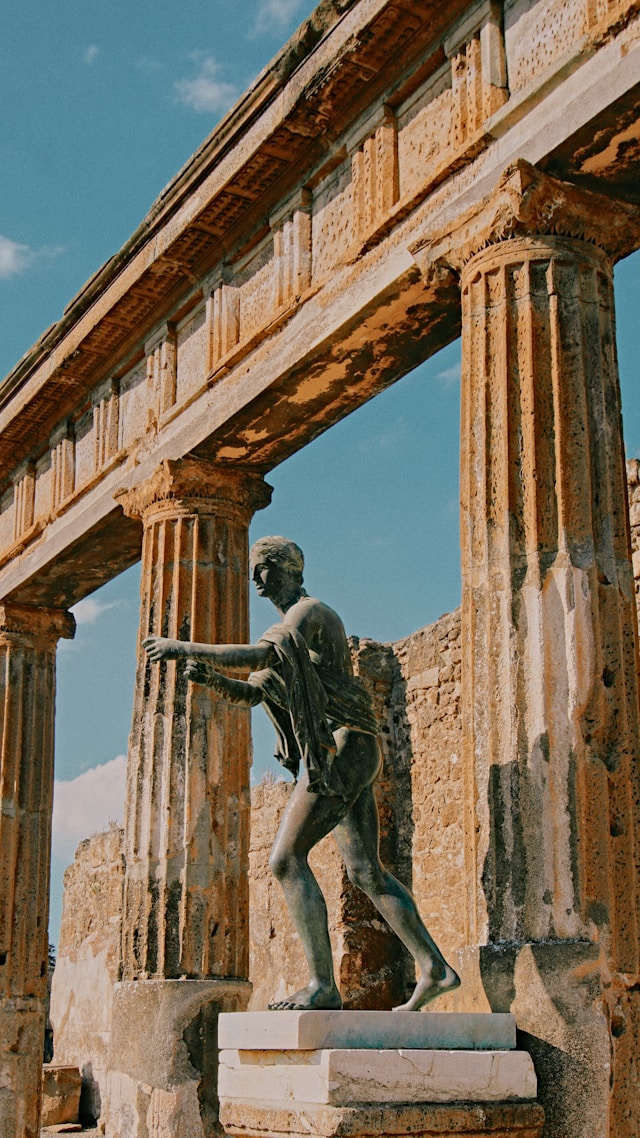 A statue at Pompeii
A statue at PompeiiThe Forum, Pompeii's main public square, serves as an excellent starting point for your exploration. This large rectangular space was the heart of political, commercial, and social life in ancient Pompeii.
Surrounded by important buildings including temples, basilicas, and markets, the Forum provides context for understanding how Roman cities functioned and how citizens interacted in public spaces.
Don't miss the incredibly well-preserved amphitheater, one of the oldest surviving Roman amphitheaters in the world, dating back to 70 BC. This impressive structure could hold up to 20,000 spectators and hosted gladiatorial games and other public spectacles.
The acoustics remain excellent, and the site occasionally hosts modern concerts and performances, creating a unique blend of ancient and contemporary entertainment.
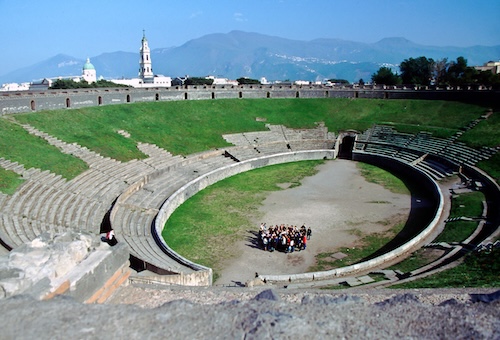 Pompeii Amphitheater
Pompeii AmphitheaterThe House of the Vettii stands out as one of Pompeii's most luxurious and best-preserved private residences. This wealthy merchant family's home showcases exquisite frescoes, elegant gardens, and sophisticated architectural features that demonstrate the high standard of living enjoyed by Pompeii's upper class. The erotic artwork in the entrance hall often surprises visitors and reflects ancient Roman attitudes toward sexuality.
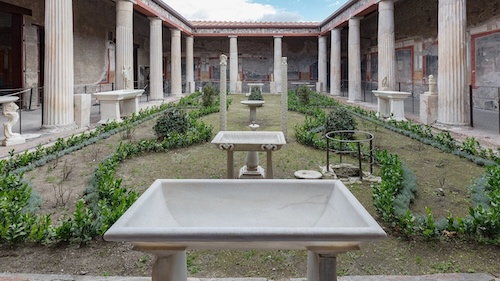 House of the Vettii, Pompeii
House of the Vettii, PompeiiFor a fascinating glimpse into ancient Roman bathing culture, visit the Stabian Baths, the oldest and largest bath complex in Pompeii. These remarkably preserved facilities include separate sections for men and women, with cold, warm, and hot rooms, plus an exercise area. The sophisticated heating system and beautiful decorations illustrate the importance Romans placed on hygiene and social bathing.
The Villa of Mysteries, located outside the main city walls, houses some of the most spectacular and mysterious frescoes in Pompeii. This large villa contains a famous series of wall paintings depicting what appears to be initiation rites into a mystery cult, possibly related to the worship of Dionysus. The vivid colors and dramatic scenes have captivated visitors and scholars for generations.
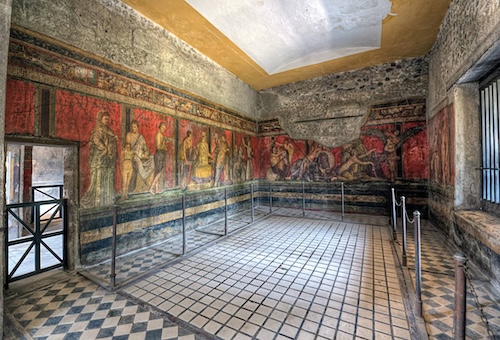 The Villa of Mysteries, Pompeii
The Villa of Mysteries, PompeiiThings To Do In Pompeii
Top tip: visit the Lupanar, Pompeii's ancient brothel, early in the morning or late in the afternoon to avoid crowds. This small building with its explicit frescoes and stone beds provides insight into another aspect of Roman life.
The graffiti on the walls, written by both clients and workers, offers unfiltered glimpses into ancient attitudes and experiences.
Local guides often recommend exploring the residential areas beyond the main tourist attractions. The House of the Faun, named after a bronze statue found there, is one of the largest and most impressive private residences in Pompeii.
Its famous Alexander Mosaic (now in Naples' Archaeological Museum) once decorated the floor, and the house's layout demonstrates the wealth and sophistication of its owners.
The ancient streets of Pompeii tell their own stories through their design and preservation. Notice the raised stepping stones that allowed pedestrians to cross streets without stepping in waste and water, while still permitting wheeled vehicles to pass. The deep ruts worn into the stone streets by countless cart wheels provide tangible evidence of the city's bustling commercial activity.
Thermopolia, ancient Roman fast-food establishments, are scattered throughout Pompeii and offer fascinating insights into dining habits of ordinary citizens.
These shops feature large ceramic jars (dolia) built into marble counters where hot food and drinks were served. Recent excavations have even revealed ancient snack foods preserved in some of these containers, providing remarkable details about Roman cuisine.
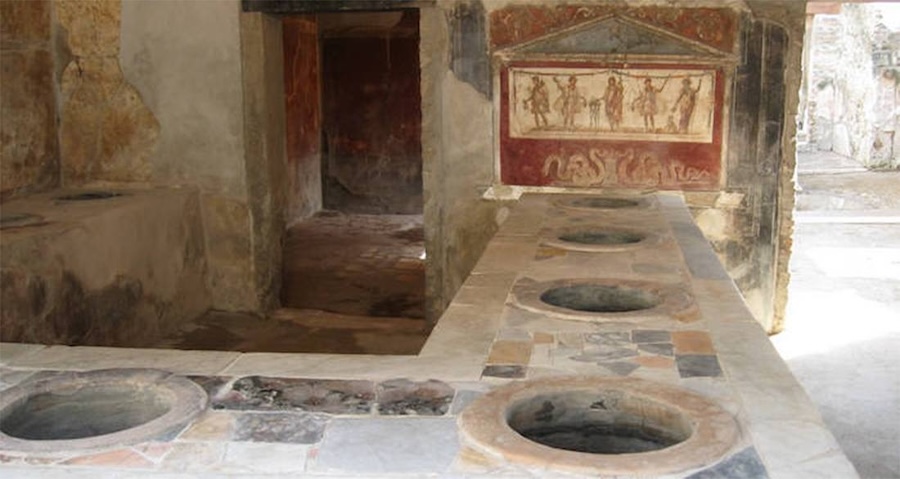 A Thermopolium in Pompeii
A Thermopolium in PompeiiThe Large Theatre and Small Theatre (Odeon) showcase Pompeii's vibrant cultural life. The Large Theatre, built into a natural hillside, could accommodate about 5,000 spectators for dramatic performances, while the smaller, roofed Odeon hosted musical performances and poetry readings for more intimate audiences. Both venues demonstrate the importance of entertainment in Roman society.
An often-overlooked gem is the House of the Golden Cupids, which features beautiful garden areas and exquisite decorations. This residence belonged to the Poppaea family, possibly related to Emperor Nero's wife, and showcases refined taste in art and architecture. The house's name comes from small golden cupid decorations found throughout the property.
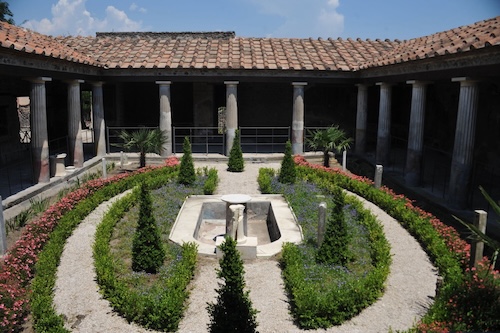 House of the Golden Cupids, Pompeii
House of the Golden Cupids, PompeiiFor the best photography opportunities, local photographers recommend visiting during the golden hours just after opening or before closing. The soft light enhances the colors of the frescoes and creates dramatic shadows among the ruins. Early morning visits also offer the advantage of fewer crowds and cooler temperatures, especially important during summer months.
The Pompeii Archaeological Site offers several ticket options to enhance your visit. The basic ticket provides access to the main archaeological area, while combination tickets include entry to nearby sites like Herculaneum, Oplontis, or Stabiae. Audio guides are available in multiple languages and provide valuable context and stories that bring the ruins to life.
Insider knowledge suggests planning at least a full day for Pompeii, though many visitors find even this insufficient to see everything thoroughly. The site is vast, and there's an overwhelming amount to discover.
Consider focusing on specific areas or themes during your visit rather than trying to see everything superficially. Many experienced visitors return multiple times to fully appreciate different aspects of the site.
You can book a Pompeii Small Group Tour with an Archaeologist through our trusted partner Viator.
Click here for further details of this tour and to book.

The Location Of Pompeii In Italy
The on-site cafeteria and gift shop near the main entrance provide convenient breaks during your exploration, but locals recommend bringing water and snacks, especially during summer. The site offers limited shade, and walking on ancient stone streets can be tiring. Comfortable walking shoes with good grip are essential, as some surfaces can be slippery or uneven.
Recent technological innovations have enhanced the Pompeii experience significantly. Virtual reality installations at various locations throughout the site allow visitors to see how buildings and rooms appeared in their original state. These immersive experiences help bridge the gap between the ruins you see today and the vibrant city that once thrived here.
The location of Pompeii in Italy makes it an ideal base for exploring the broader Campania region. The nearby Amalfi Coast, with its stunning coastal scenery and charming towns like Positano and Amalfi, is easily accessible. Mount Vesuvius itself offers hiking opportunities and spectacular views over the Bay of Naples, providing context for understanding Pompeii's dramatic history.
Herculaneum, Pompeii's smaller but equally fascinating neighbor, was also destroyed by Vesuvius and offers a different perspective on the disaster. While Pompeii was buried in ash and pumice, Herculaneum was engulfed by pyroclastic flows that carbonized organic materials, preserving wooden structures, papyrus scrolls, and other materials rarely found at archaeological sites.
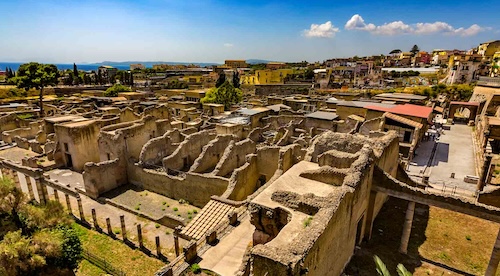 Herculaneum
HerculaneumLocal restaurants in modern Pompei offer excellent opportunities to taste regional specialties while reflecting on your ancient discoveries. Try traditional Campanian dishes like pizza margherita (invented in nearby Naples), fresh mozzarella di bufala, or local wines made from grapes grown in the same volcanic soil that once supported ancient Pompeii's agriculture.
Seasonal considerations play an important role in planning your Pompeii visit. Spring (April-May) and fall (September-October) offer the most comfortable weather and fewer crowds.
Summer can be extremely hot with intense sun exposure and large tour groups, while winter provides a more contemplative experience with cooler temperatures and occasional rainfall that can make surfaces slippery.
Be aware that, while personal photography is generally permitted throughout the site, flash photography and tripods are often restricted in certain areas to protect the ancient frescoes and structures.
Professional photography requires special permits, and drone usage is strictly prohibited over the archaeological site.
The Location Of Pompeii In Italy
The ongoing excavation and restoration work at Pompeii means that some areas may be temporarily closed or have restricted access during your visit. However, this also means that new discoveries are regularly made and previously closed areas are periodically opened to the public.
Check the official website before your visit for the most current information about accessible areas and any special exhibitions.
Educational programs and special tours cater to different interests and age groups. Family-friendly tours help children understand ancient Roman life through interactive activities, while specialized tours focus on topics like ancient Roman engineering, art history, or daily life.
Night tours, offered during summer months, provide a completely different perspective on the ruins under artificial lighting.
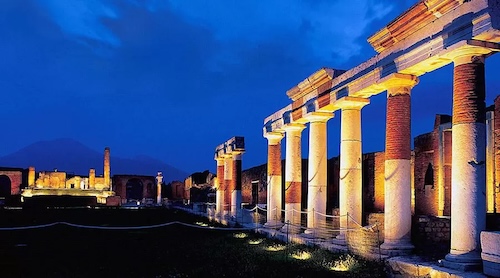 Pompeii at night
Pompeii at nightYour visit to Pompeii will undoubtedly leave you with a profound appreciation for both the fragility and resilience of human civilization. This remarkable site continues to teach us about ancient Roman life while serving as a powerful reminder of nature's awesome power.
As you walk these ancient streets and peer into preserved homes, you're not just observing history – you're experiencing a direct connection to the lives, dreams, and final moments of people who lived nearly 2,000 years ago. Plan your visit carefully, bring comfortable shoes and plenty of water, and prepare for one of the most moving and educational experiences Italy has to offer!



